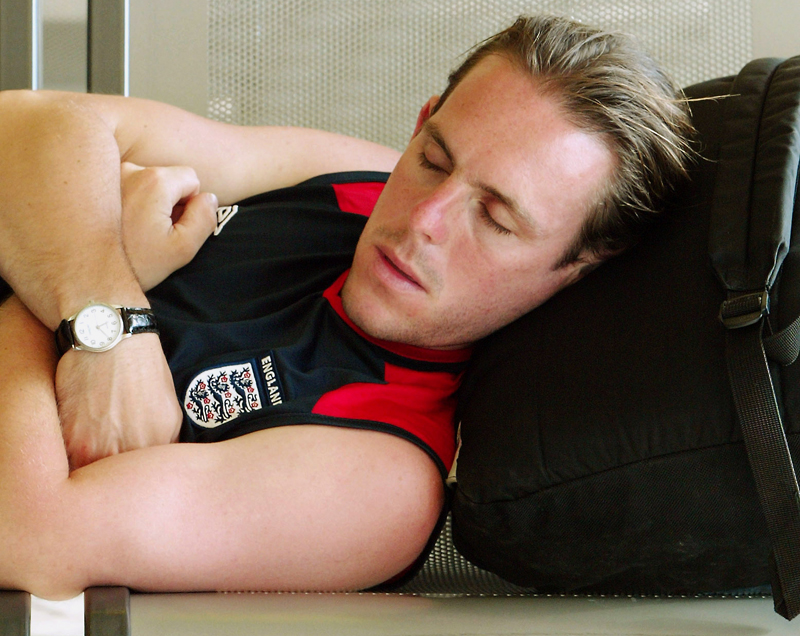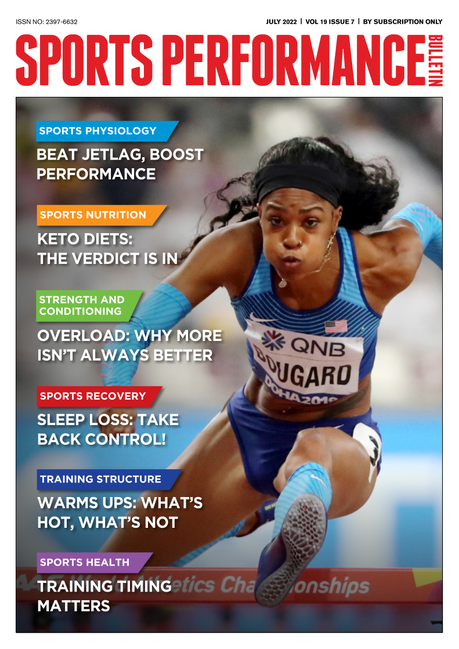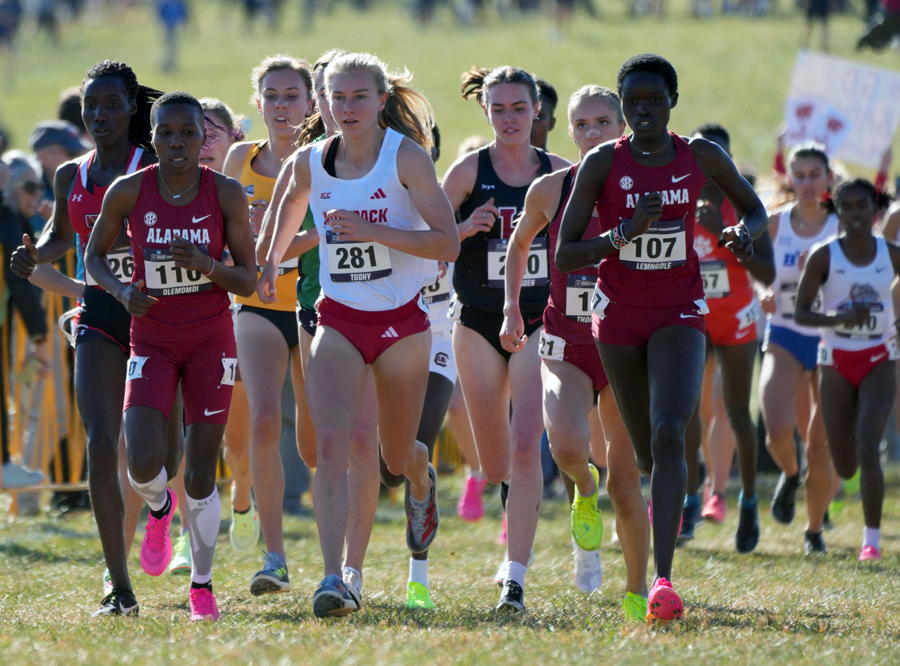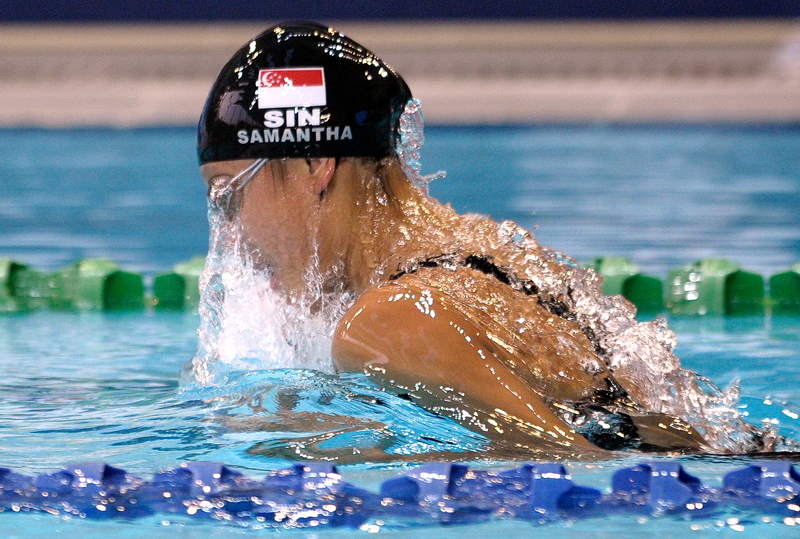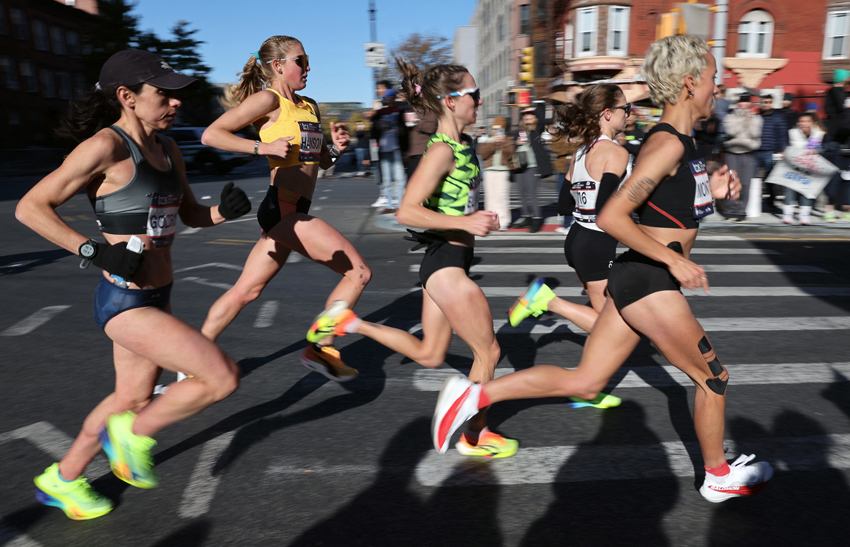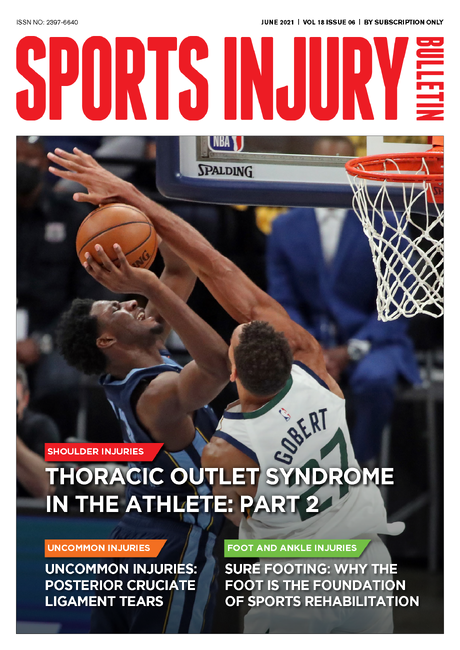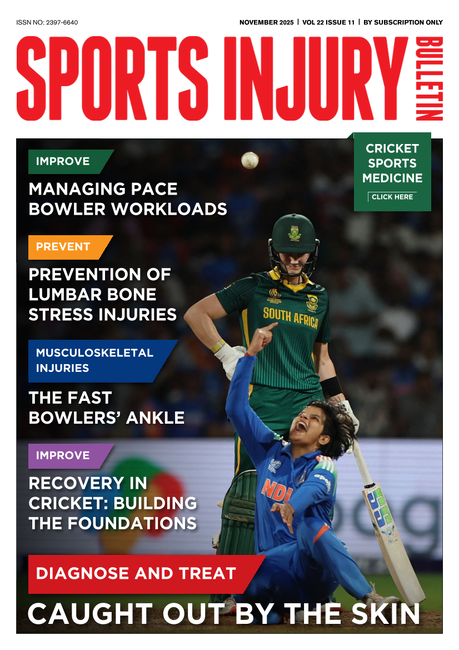You are viewing 1 of your 1 free articles. For unlimited access take a risk-free trial
Sleep and performance: a one-night wonder
What is the true effect of missing one night’s sleep on athletic performance, and can a good sleep the next night fully restore that performance? Andrew Sheaff looks at new research
While it’s generally understood that sleep loss is ‘bad’, it’s not always clear how bad, particularly in acute situations. The reality is that most athletes will experience a night of poor sleep, sometimes in the lead up to critical training sessions or competitions. With all the concern about poor sleep, it’s easy to perceive that any loss of sleep is a catastrophic event that can ruin a preparation. However, that may not necessarily be the case.
While the importance of sleep is appreciated by most, the specific impact of sleep deprivation on short-term performance has not been sufficiently studied. Nor has the effect of sleep recovery during the following night on the ability to restore performance and function. There are many questions to be answered. How long does it take for performance to recover following a bad night’s sleep, or even worse, no sleep? And since lack of sleep is going to have negative psychological and physiological effects, what can be said about performance is being compromised? These are all questions that need answers, and fortunately a recent study sought to provide them.
The study
An international group of researchers conceived of a study to test the impact of one night of sleep deprivation and the subsequent impact of sleep recovery during the following evening(1). 26 subjects were recruited, all male cyclists and triathletes with an extensive cycling background. The average VO2max of the subjects was 55.3 ml/kg/min, so while not fantastically fit, they were no slouches. It was also required that they had been performing at least 3 hours per week of purposeful and challenging cycling training in the lead up to the study. The researchers also screened out individuals who had extreme chronotypes, such as very early risers or very late risers, as well as those with sleep challenges. They did so to avoid extreme measures compromising and skewing the data.
Here’s how the study was set up. Baseline testing, which we’ll cover shortly, was performed for all subjects. After baseline testing was performed the subjects were randomized into one of two groups. The control group continued with their normal sleeping schedules and behaviors. In contrast, the experimental group was to perform a night of complete sleep deprivation and then sleep normally the following night. The night with the return to normal sleeping pattern was call recovery sleep. To ensure that subjects remained awake, they were asked to stay overnight at the laboratory where all the testing took place. Food and behavioral choices were controlled as much as possible to reduce the influence of potentially disruptive factors.
Testing
To gain insight into the specific impact of sleep deprivation on endurance performance, numerous tests were performed. Each subject performed the following tests three times. A baseline, following a normal night of sleep or no sleep, and then following a normal night of sleep. This allowed the researchers to determine what happens after no sleep, and what happens after sleep is restored.
The included tests were complementary in that the provided similar information that helped to paint a more nuanced picture as to what was occurring. First, the subjects completed the Brunel Mood Scale and the Karolinska Sleepiness Scale. These tests provided subjective measures of how the subjects perceived their mood and their level of sleepiness. These tests were performed prior to any exercise during each experimental session.
Beyond these subjective psychological measures, objective measures were also taken. The researchers performed what’s known as a 12-minute Alpha Attenuation Test using EEG technology. EEG stands for electroencephalography, which allows for the measurement of the electrical activity of the brain, much like an EKG allows for the measurement of the electrical activity of the heart. In this specific test, the subjects performed alternating two-minute periods where their eyes were open and closed, while looking at a fixed point. This test allowed the researchers to understand how sleeping conditions impacted the baseline electrical activity of the brain.
After the Alpha Attenuation Test, the subjects performed a psychomotor vigilance test. This too is an objective measurement of brain function. The test involves pressing a computer keyboard key in response to a visual stimulus. The stimulus would appear randomly every 2-10 seconds. If the subjects responded ‘too fast’ due to anticipation, it was considered an error, as were responses where no stimulus was given, no response was made to a stimulus, or the response was excessively delayed. These responses were all defined based upon clear cutoff points.
Just prior to the beginning of the physical testing, the subjects completed a motivation questionnaire to assess their current level of motivation. Then, it was on to the testing. For each day, the subjects performed two exercises bouts. The first consisted of a 40-minute cycling bout performed at 60% of their VO2peak. Their VO2peak was the highest amount of oxygen they consumed during a ramped exercise test, which was performed during a familiarization session prior to any of the sleep deprivation interventions. The subjects had to simply maintain the assigned speed throughout the test. This represented a moderate challenge, and the purpose was to assess the psychological and physiological response to moderate exercise. The subjects then took a 5-minute break, after which the real fun started. The subjects performed a 20-minute maximal effort cycling trial. The goal was to do as much work as possible in 20 minutes.
Throughout the test itself multiple subjective and objective measures of intensity were taken. Heart rate was monitored continuously to measure cardiovascular strain. Blood samples were taken every 8 minutes during the 40-minute submaximal test. They were also taken 60-seconds after the 20-minute all out trial. Blood lactate was then measured to determine the degree of metabolic activation that occurred. Rating of perceived exertion (RPE) and affect, a tendency toward pleasure or displeasure, were measured every 5 minutes throughout the tests.
At the conclusion of the test, three more questionnaires were given. The Brunel Mood scale and the Karolinska sleepiness scale given again assess changes in subjective sleepiness. The subjects were also given what’s known as the NASA-TLX multidimensional scale, which serves to measure the subject’s perceived workload. It has multiple dimensions which all serve to measure the challenge of the exercise bout.
To measure performance during the 40-minute cycling test, the researchers took a clever approach. Exercise has consistently been shown to terminate when RPE is 20, and RPE raises linearly over time. As RPE was slowly rising throughout the 40-minute trial, the authors could determine how long it would theoretically take for the RPE to hit 20. They used this number as theoretical time to exhaustion. A faster rising RPE indicates a shorter time to exhaustion as compared to a lower rising RPE. Performance during the 20-minute bout was straightforward. They just took the total workload that was accumulated as the measure of performance.
The findings
All in all, that’s a lot of testing, performed with the goal of uncovering what happens when athletes don’t sleep for an entire night, and then what happens when they have the opportunity to sleep. So, what was found? It’s no surprise that there were a lot of negative outcomes when the subjects were deprived of a full night’s sleep. Subjective fatigue went up, subjective vigor went down, rating of sleepiness went up, reaction time during the psychomotor vigilance test went up, subjects made more mistakes during the same test, and brain function during the Alpha Attenuation test was compromised. In the control group, only a slight increase in fatigue and slight loss of vigor on the 3rd day were seen. This isn’t too surprising considering the prior exercise testing that was performed.
What was surprising is that these measures all returned to baseline on day three following sleep recovery for the sleep deprivation group. While sleep deprivation did have a major effect on all the measures of fatigue and sleepiness, a full night’s sleep was able to reverse these changes (see figure 1). Similarly, intrinsic motivation took a big hit in the sleep deprivation group, but again, it rebounded back to normal after a full night of sleep.
For the 40-minute submaximal test, RPE increased across all tests for both groups. On the baseline day, there were no differences between the groups. On the 2nd day, the sleep deprivation experienced a significantly faster rise in RPE, and the total rise was much higher. Exercise just felt harder on no sleep. However, that effective disappeared once the subjects were able to get a full night’s rest as RPE measures were similar to the subjects’ initial test.
When it came to affect, or the tendency toward pleasure or displeasure, the same dynamics were at play. There was a slight increase decrease in pleasure for both groups across all tests. But those decreases were much faster and much more rapid in the presence of sleep deprivation. Again, following a full night of sleep, affect scores returned to similar measures as the initial testing.
In contrast to these subjective measures, there were not group difference for heart rate and lactate measurements. While heart rate gradually increased across all tests, these increases were similar. Lactate levels were fairly stable throughout, and these levels were not influenced by sleep status.
For the maximal effort trial, these differences were not seen. While RPE and heart rate certainly went up during the trials, it did so in a similar manner for all groups. Likewise, affect certainly went down across all trials. However, these differences were consistent across groups.
When it came to performance, 40-minute cycling outcomes were compromised following sleep deprivation. Exercise just feels harder during submaximal efforts, and that will compromise performance over time. Fortunately, performance rebounded following sleep recovery, indicating that performance can be quickly recovered by sleep. In contrast, there were no significant differences in performance during the 20-minute all out trial. While performance did dip slightly in the sleep deprivation group, followed by a recover the following night, those differences were not statistically significant. From a performance standpoint, it appears sleep compromises longer, submaximal efforts more so than shorter, maximal efforts.
Figure 1: Sleep deprivation vs. normal sleep on days 1, 2 and 3
Open circles = sleep deprived on day #2. Black squares = normal sleep throughout. Notice how perceived exertion rises on day #2 and the ‘feelings’ score falls in the sleep deprived athletes, but both metrics are restored after one night of recovery sleep (ie on day#3). Meanwhile, heart rates and lactate levels are not affected by sleep deprivation.
Practical implications for athletes
At some point, you or your athletes will experience a poor night’s sleep during prior to important training or competition. What’s nice about this study is that it investigated the worst-case scenario, a total loss of sleep. It’s like to never be quite that bad. That being said, the findings are clear sleep loss does impact all subjective and objective markers of sleepiness, and performance is compromised, particularly during longer, submaximal exercises. The good news is that these negative outcomes can be quickly reversed with intentional sleep recovery on the following night. Subjective and objective measures of sleepiness normalize, as does performance.
Following a bad night’s sleep, it’s easy to catastrophize. Fortunately, it’s like to be much less of a problem than it feels like. One thing is clear. It will feel bad the next day. The good news is that those feelings will quickly disappear once sleep recovery occurs. Rather than a catastrophic problem, it’s just a bump in the road. And if it occurs prior to an important training session, it’s okay to bump that session back a day. It’s likely that a solid night of sleep will right all wrongs without disrupting the training plan.
While negative outcomes following sleep deprivation can be quickly reversed by sleep recovery, that doesn’t necessarily mean that it’s perfectly acceptable to skip a night of sleep, catch back up the next day, and it will be like nothing ever happened. It’s not known what happens when this process occurs repeatedly. Further, optimal performance and ‘non-significantly different’ performance aren’t the same thing, and small differences do matter. Performance may be compromised in a way that’s meaningful to you. That being said, following a bad night’s sleep, it’s not the end of the world provided there’s a focused effort to make sure recovery sleep occurs on the next and subsequent days. These things do happen, and with a little patience, everything can get back on track quickly.
References
1. Eur J Appl Physiol. 2025 Jul 25. doi: 10.1007/s00421-025-05908-w. Online ahead of print.
Newsletter Sign Up
Testimonials
Dr. Alexandra Fandetti-Robin, Back & Body Chiropractic
Elspeth Cowell MSCh DpodM SRCh HCPC reg
William Hunter, Nuffield Health
Newsletter Sign Up
Coaches Testimonials
Dr. Alexandra Fandetti-Robin, Back & Body Chiropractic
Elspeth Cowell MSCh DpodM SRCh HCPC reg
William Hunter, Nuffield Health
Keep up with latest sports science research and apply it to maximize performance
Today you have the chance to join a group of athletes, and sports coaches/trainers who all have something special in common...
They use the latest research to improve performance for themselves and their clients - both athletes and sports teams - with help from global specialists in the fields of sports science, sports medicine and sports psychology.
They do this by reading Sports Performance Bulletin, an easy-to-digest but serious-minded journal dedicated to high performance sports. SPB offers a wealth of information and insight into the latest research, in an easily-accessible and understood format, along with a wealth of practical recommendations.
*includes 3 coaching manuals
Get Inspired
All the latest techniques and approaches
Sports Performance Bulletin helps dedicated endurance athletes improve their performance. Sense-checking the latest sports science research, and sourcing evidence and case studies to support findings, Sports Performance Bulletin turns proven insights into easily digestible practical advice. Supporting athletes, coaches and professionals who wish to ensure their guidance and programmes are kept right up to date and based on credible science.

